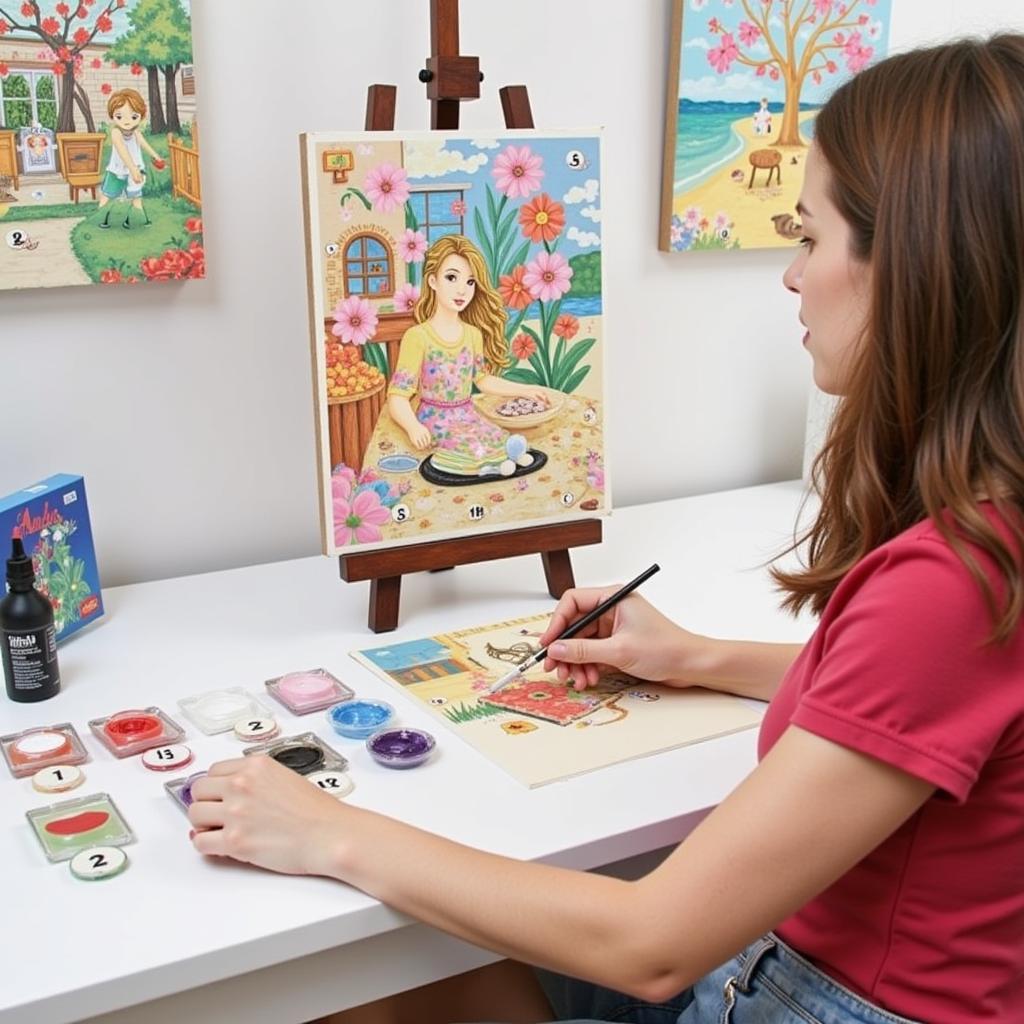Fine Art Insurance Application: Safeguarding Your Creative Legacy
Navigating the world of fine art insurance can seem daunting, especially when you’re focused on the intricacies of your creative practice. A Fine Art Insurance Application is the crucial bridge between your passion and its protection. This comprehensive guide will demystify the process, ensuring your valuable artwork receives the coverage it deserves.
Why is Fine Art Insurance Essential?
Imagine this: a prized painting, years in the making, damaged during a move. Or, a cherished sculpture, the embodiment of your artistic vision, stolen from your studio. These scenarios, while unsettling, underscore the vital need for fine art insurance.
Fine art insurance offers specialized protection tailored to the unique risks faced by artists, collectors, and galleries. It goes beyond standard homeowner’s or renter’s insurance, providing coverage for:
- Physical damage: This includes protection from events like fire, theft, vandalism, accidental damage, and natural disasters.
- Transit risks: Coverage during transportation, whether your artwork is on its way to a gallery, an exhibition, or a new collector’s home.
- Market fluctuations: Protection against loss in value due to market trends or unforeseen circumstances.
Understanding the Fine Art Insurance Application
The fine art insurance application is the first step towards securing comprehensive protection. It’s crucial to approach this process with accuracy and transparency to ensure you receive the right coverage at the most favorable terms.
Key Information Required for Your Application
While specific requirements may vary depending on the insurance provider, expect to provide:
-
Personal Information: Your name, contact details, and any relevant professional affiliations.
-
Artwork Details: A comprehensive inventory of the artwork you wish to insure. This includes:
- Title of Artwork:
- Artist’s Name: If it’s your own work, provide your full legal name as the artist.
- Year of Creation:
- Medium: For example, oil on canvas, bronze sculpture, digital print, etc.
- Dimensions: Provide accurate measurements in inches or centimeters.
- Provenance: This refers to the artwork’s ownership history, including any previous sales records, exhibition history, or publications featuring the piece. Strong provenance can positively influence the insurance value.
- Photographs: Clear, high-resolution images of each artwork from multiple angles. Some insurers may require professional photographs.
-
Valuation: Providing an accurate estimate of your artwork’s value is essential for determining the appropriate coverage amount. You can establish value through:
- Appraisals from Qualified Professionals: Seek appraisals from certified appraisers specializing in fine art.
- Sales Records: Provide documentation of previous sales of your artwork or similar pieces.
- Gallery or Auction Estimates: If your artwork has been exhibited or considered for auction, include any relevant estimates provided.
-
Security Measures: Detail the security measures in place to protect your artwork, such as:
- Home Security System: If your artwork is stored at home, outline any security systems in place, including alarms, cameras, and motion detectors.
- Climate Control: Describe any measures taken to protect your artwork from environmental factors like humidity and temperature fluctuations. This is particularly important for sensitive mediums.
- Storage Solutions: If your artwork is stored off-site, specify the type of storage facility, its security protocols, and climate control features.
Tips for a Smooth Application Process
-
Be Thorough and Accurate: Provide complete and honest information to avoid potential complications or coverage disputes in the future.
-
Document Your Artwork: Maintain detailed records of your artwork, including photographs, appraisals, provenance information, and receipts for any conservation or restoration work.
-
Review Your Policy Carefully: Once your fine art insurance application is approved, carefully review the policy documents to understand the coverage details, exclusions, and any limitations.
-
Communicate with Your Insurer: Keep your insurer informed of any changes to your art collection, address, security measures, or other relevant information.
Protecting Your Creative Passion
Obtaining fine art insurance is not just about filling out an application; it’s about safeguarding your artistic legacy. By understanding the process and providing accurate information, you can have peace of mind knowing your valuable creations are protected, allowing you to focus on what truly matters – your art.
Frequently Asked Questions about Fine Art Insurance Applications:
-
Q: How often do I need to update my fine art insurance application?
-
A: It’s generally recommended to review and update your fine art insurance policy annually. This ensures your coverage reflects any changes in your art collection, its value, or your security measures.
-
Q: Can I insure artwork I created myself?
-
A: Yes, artists can and should insure their own artwork. Coverage for artwork created by the insured party is common in fine art insurance policies.
-
Q: What if my artwork is damaged or stolen?
-
A: If you experience a covered loss, such as damage or theft, promptly contact your insurance company to initiate a claim. They will guide you through the necessary steps, which typically involve providing documentation of the loss, including photographs, police reports (in case of theft), and any relevant valuations or appraisals.
 Filing a claim for damaged artwork
Filing a claim for damaged artwork
Need Further Assistance?
For personalized guidance on fine art insurance applications and to explore coverage options tailored to your specific needs, don’t hesitate to contact our expert team. We’re here to help you navigate the world of art insurance with confidence.
Contact us:
Phone Number: 02462573573
Email: danteum@gmail.com
Address: Savico Megamall, 7-9 Đ. Nguyễn Văn Linh, Gia Thụy, Long Biên, Hà Nội 10000, Việt Nam.




